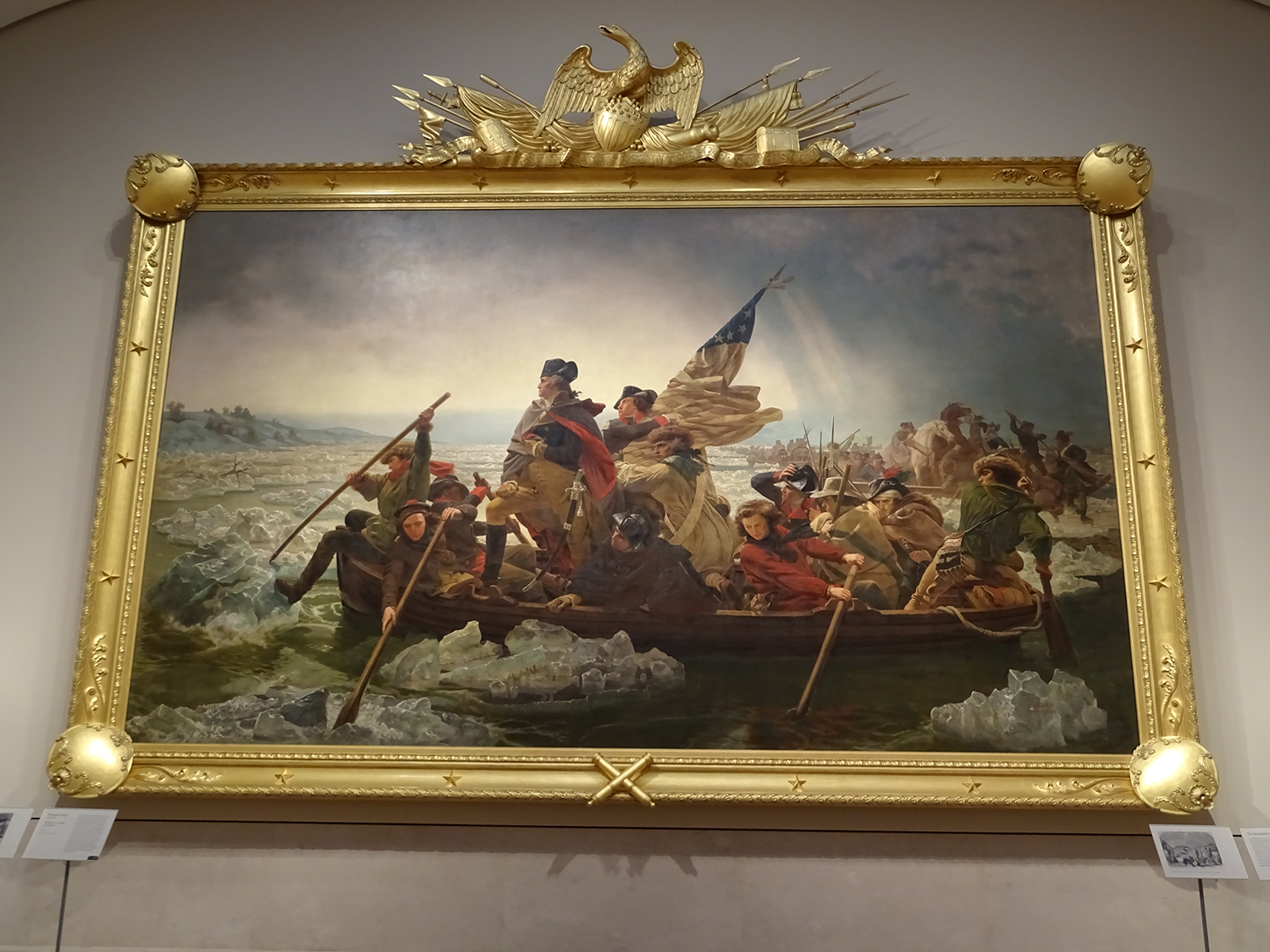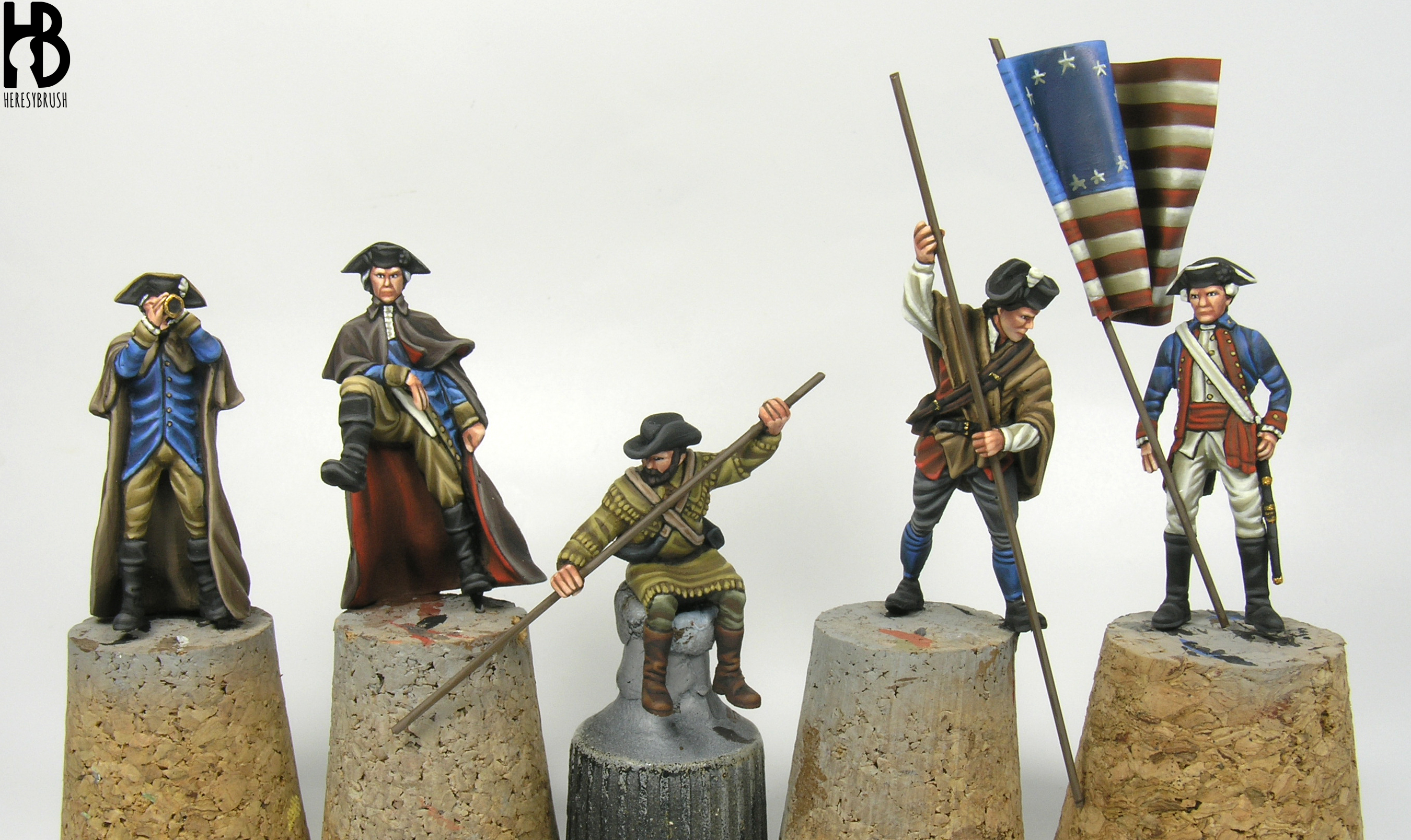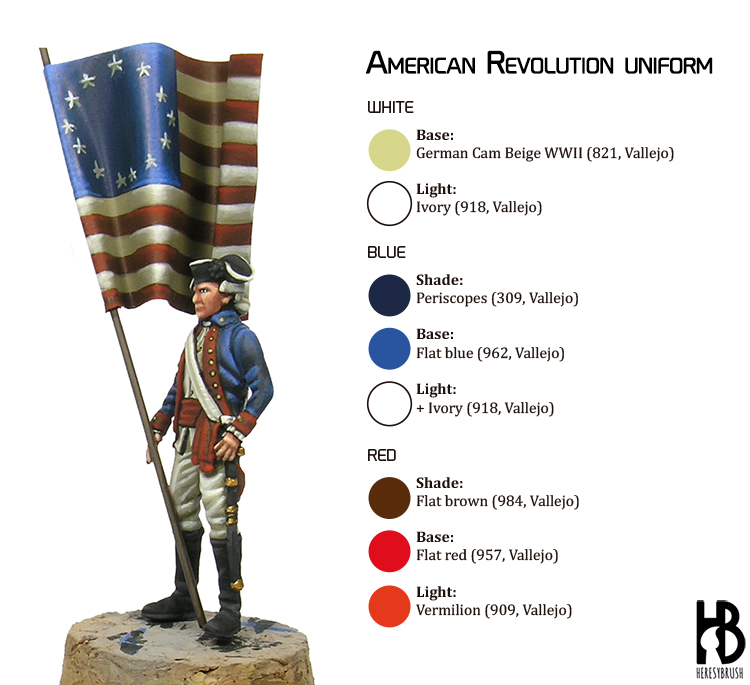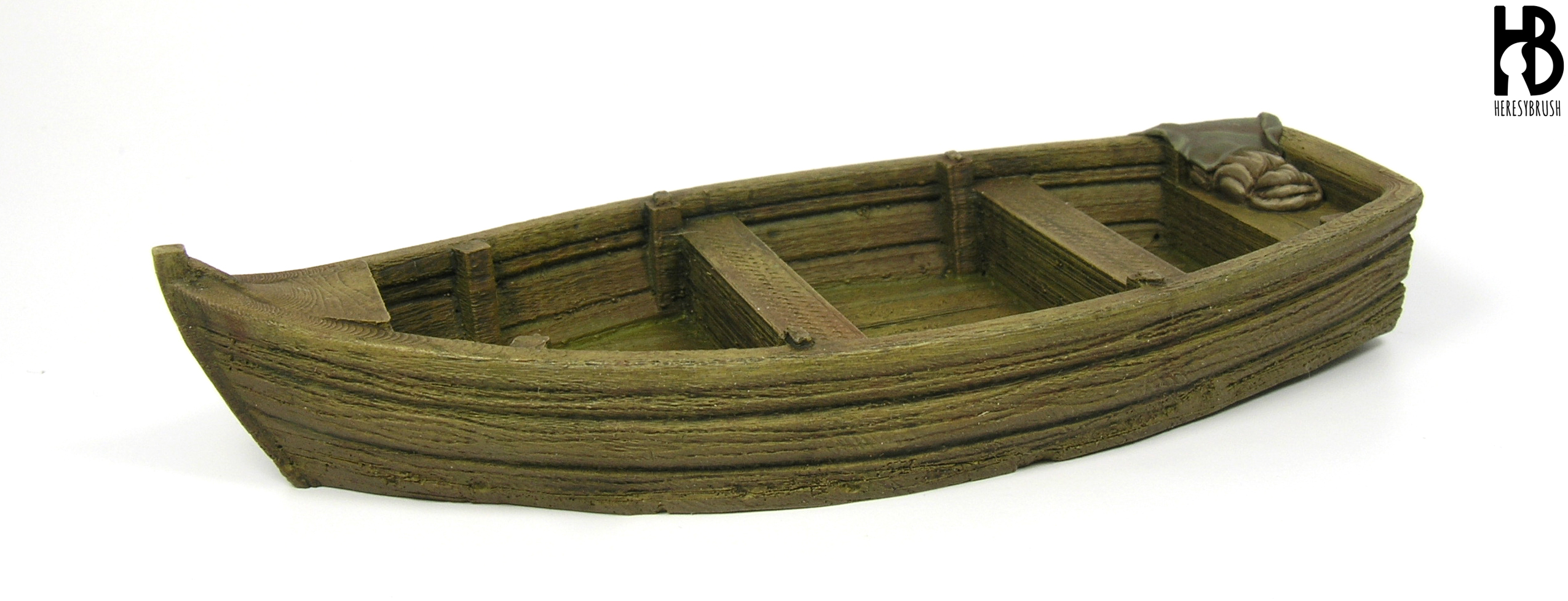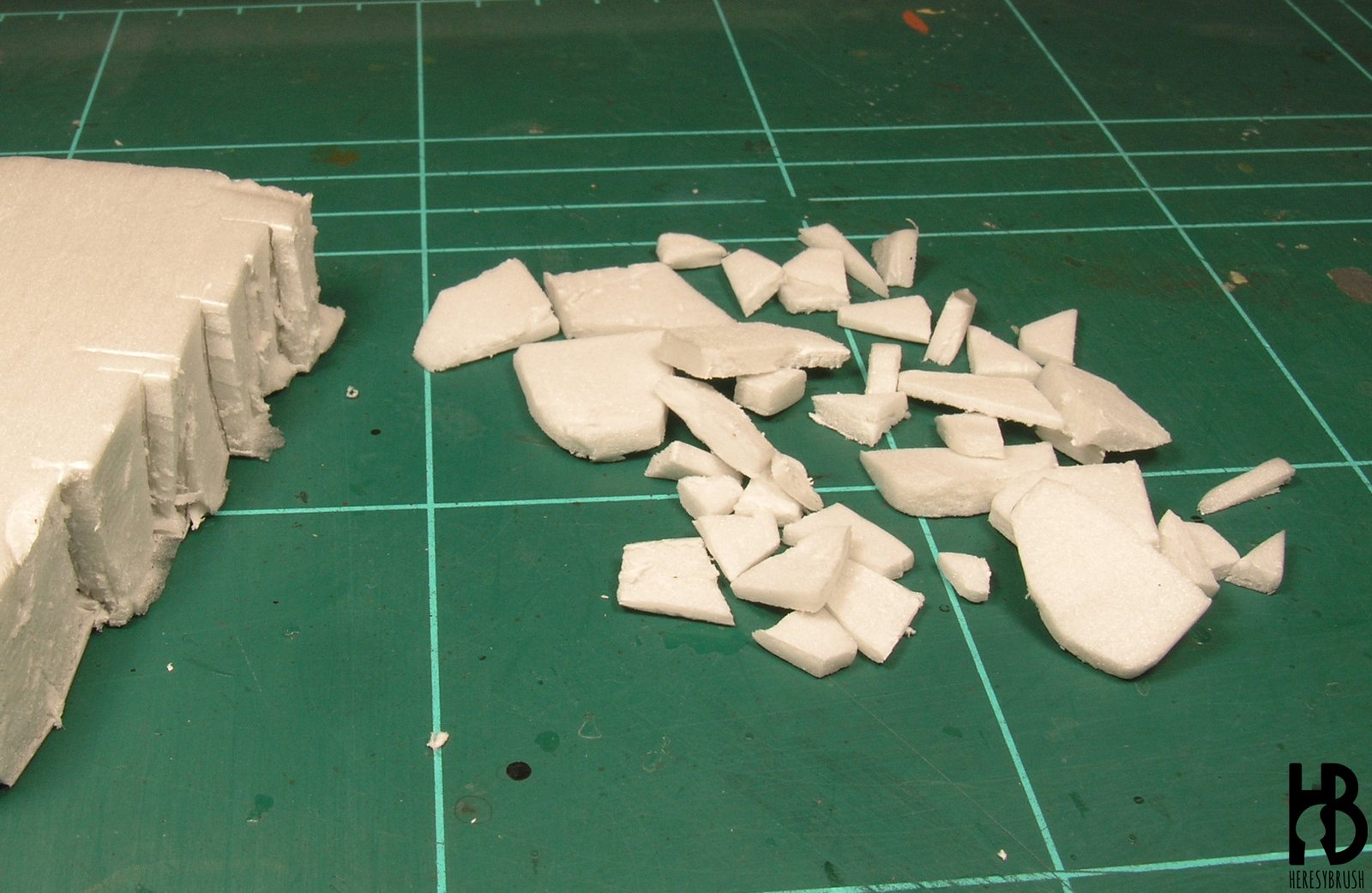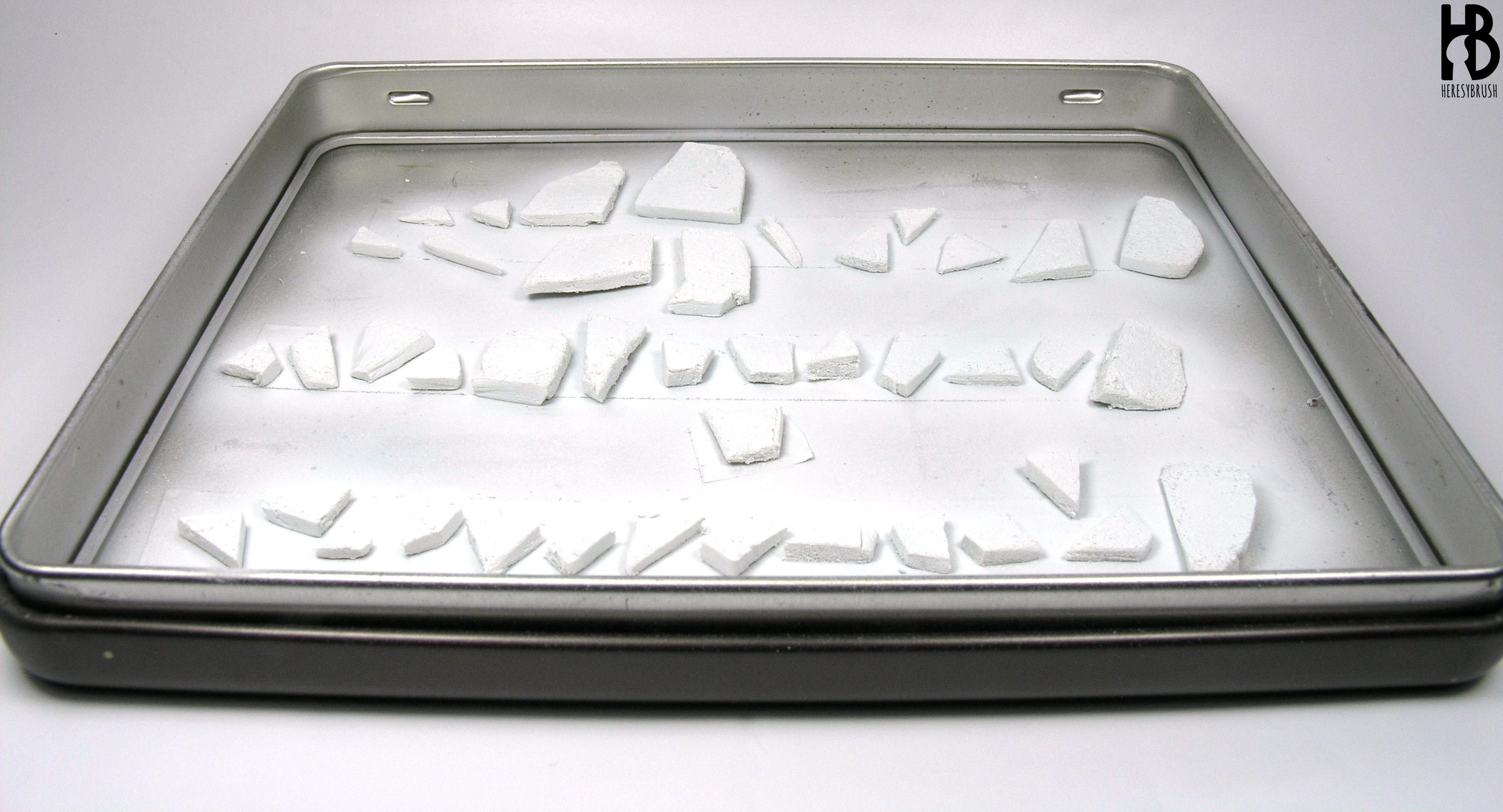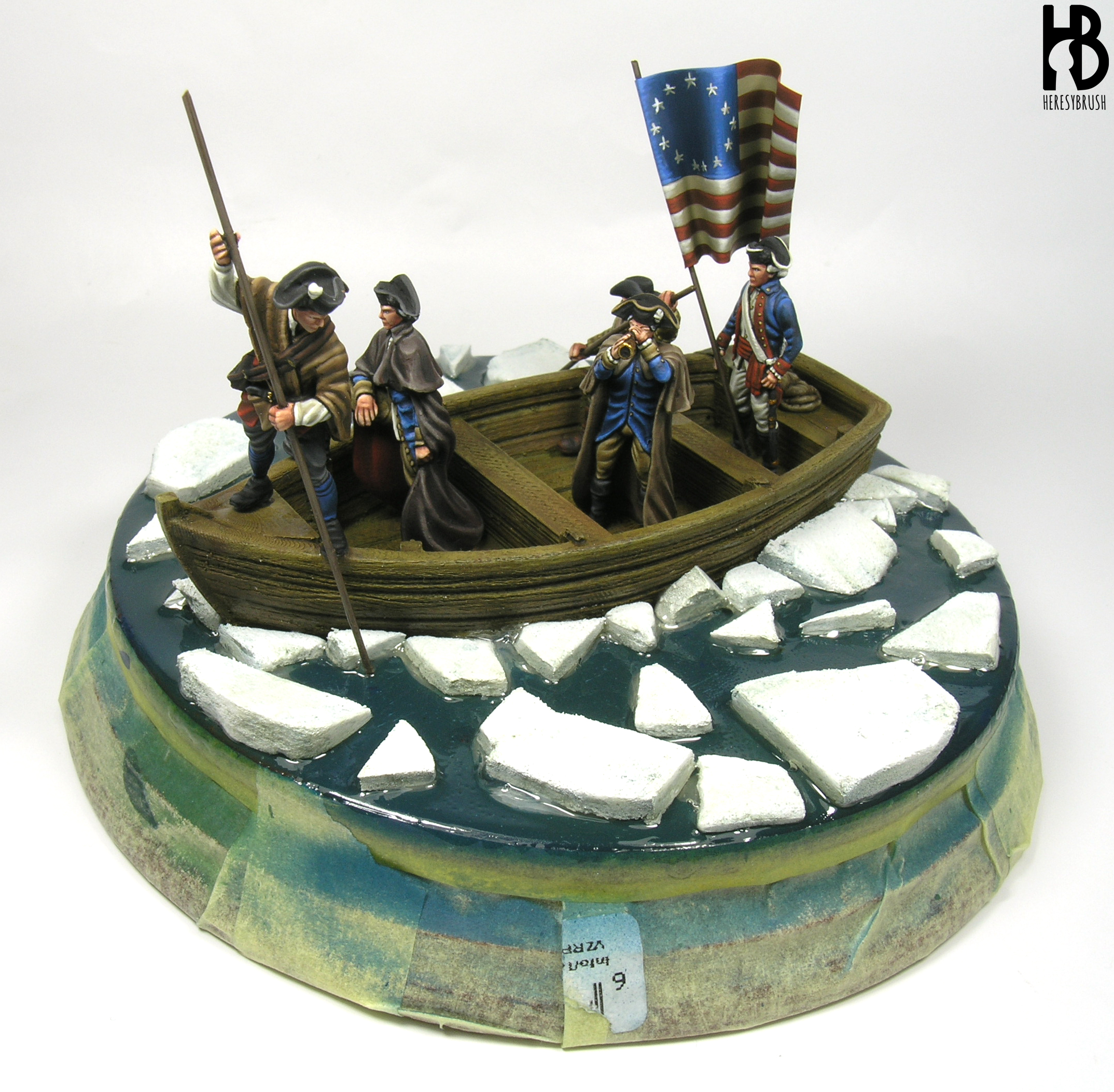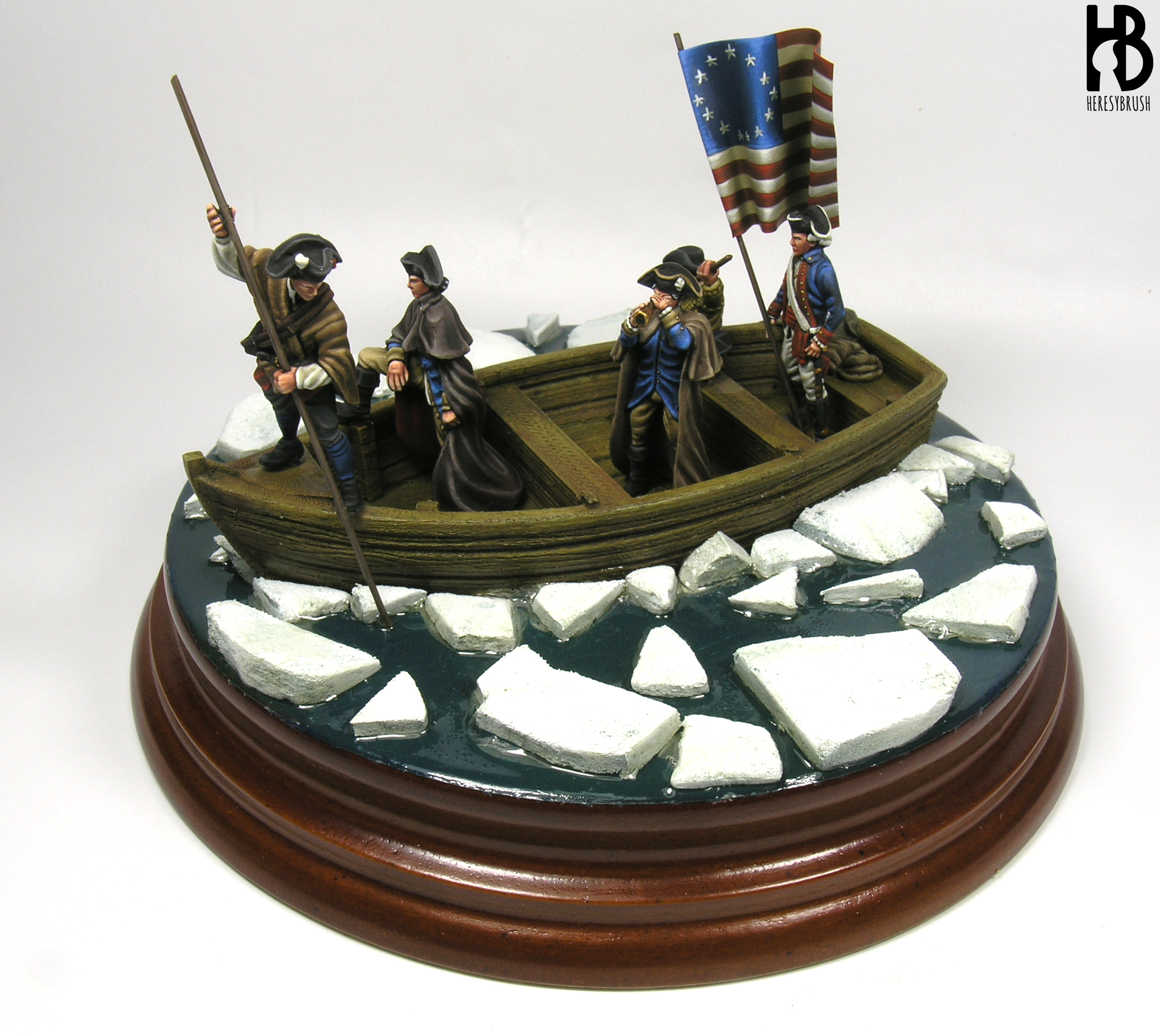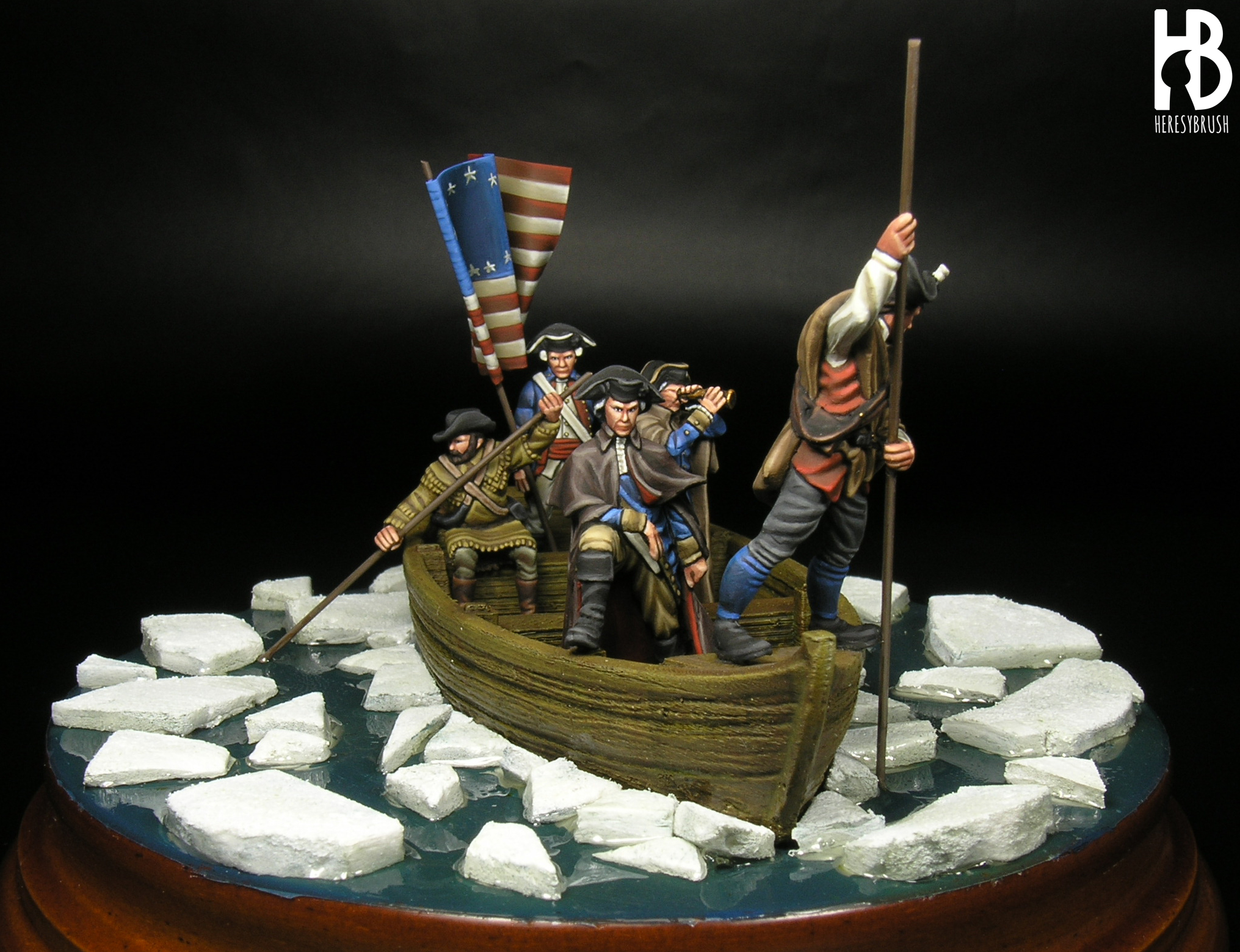I prepared this small vignette a few years ago as a present for couple of good friends, who left the old continent to spend half a year in USA. It represents George Washington’s crossing of the Delaware River during the American Revolutionary War or War of Independence (1776), and is inspired in an amazing painting by Emanuel Leutze (1851). Note that there are some inaccuracies that I replicated here, such as the flag. This would have been the right flag. Furthermore, the boats in this painting are a little bit too crowded, but Designs & Edits released a perhaps more realistic model that I had the pleasure to paint. When I visited my friends in USA, I had the chance to see this masterpiece at Metropolitan Museum (New York City):
Miniatures and boat
This model contains several metal miniatures and a resin boat. I painted the miniatures mostly following Leutze’s painting. Washington, an officer and the flag bearer are wearing the American uniform. This uniform varied a little bit during the war and the regiment s, but basically consisted on blue coats, white waistcoats and facings of varying colors (for example, red). The white color was replaced sometimes by off-white or beige garments, such as the trousers and facing of the officer with the spyglass in this vignette. I painted the other two miniatures of the vignette in civil clothes. I painted the flag in the same way I explain it here.
The boat was initially painted with an acrylic light brown color using the airbrush, and I protected this by airbrushing a generous layer of satin varnish. Next, I used an enamel-based dark wash from AMMO to highlight all the recesses. Finally, to create some contrast I use several filters -also from AMMO- to slightly change the color of some parts of the boat. For example, I use a green filter to simulate some silt or slime on the base of the boat, or a reddish filter to slightly change the yellow color of the wood in some areas to represent a worn out part.
To fix the miniatures on the boat I use a small drill to create a small hole on the feet of each miniature, were I introduced a metal rod. After determining where I wanted to place the miniatures, I similarly perforated the boat with the drill so that the metal rods in each miniature would match these holes. And then I used cyanocrylate to glue them.

 Icy water
Icy water
Washington crossed an icy river apparently full of small pieces of broken ice, at least according to Leutze’s representation. In this painting, the water has a dark blue or greenish color. To simulate this, I airbrushed several thin layers of Periscopes (309, Vallejo) and Reflective green (890, Vallejo), trying not to fully cover the whole surface one color. In addition, between layers I also painted small white dots or stripes with thinned white paint to represent some foam or even ice.
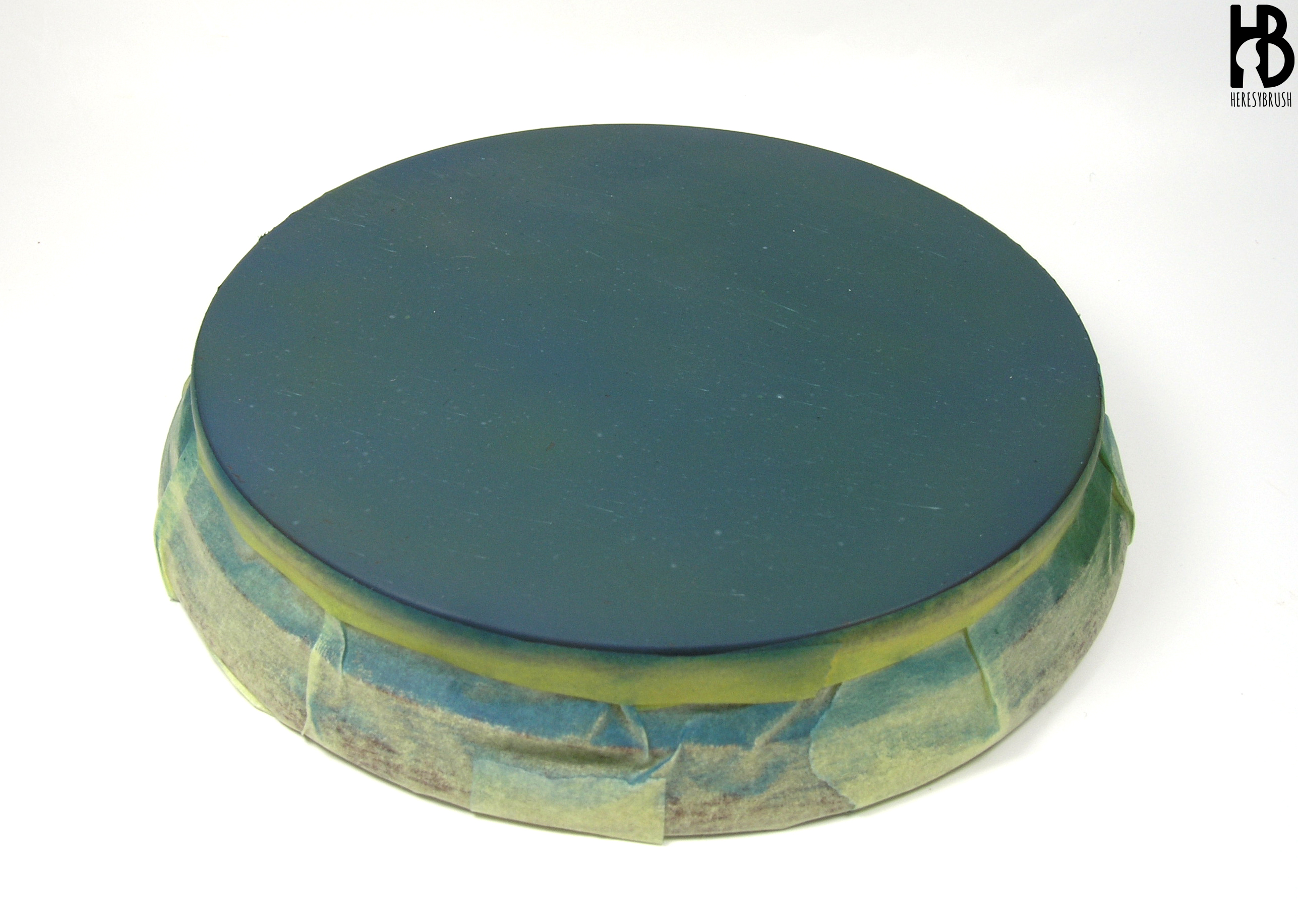 To simulate the ice I came up with the following idea. I took a piece of expanded polystyrene or foam, and with the help of a modeling knife I cut small pieces with right angles. I collected more pieces that I would need just in case, of very different sizes and shapes. The more diverse, the better.
To simulate the ice I came up with the following idea. I took a piece of expanded polystyrene or foam, and with the help of a modeling knife I cut small pieces with right angles. I collected more pieces that I would need just in case, of very different sizes and shapes. The more diverse, the better.
Then, I fixed them on a tray with a double-face tape (otherwise these small pieces would fly away when using the airbrush), and I applied a few layers of white paint with the airbrush. As many as needed until the surface was homogeneously painted.
With white glue I fixed the painted pieces of polystyrene. Do not use any other glue!!!! or you would disintegrate the polystyrene. I put more abundant pieces of ice around the boat to represent the movement of this, dragging small blocks of ice.
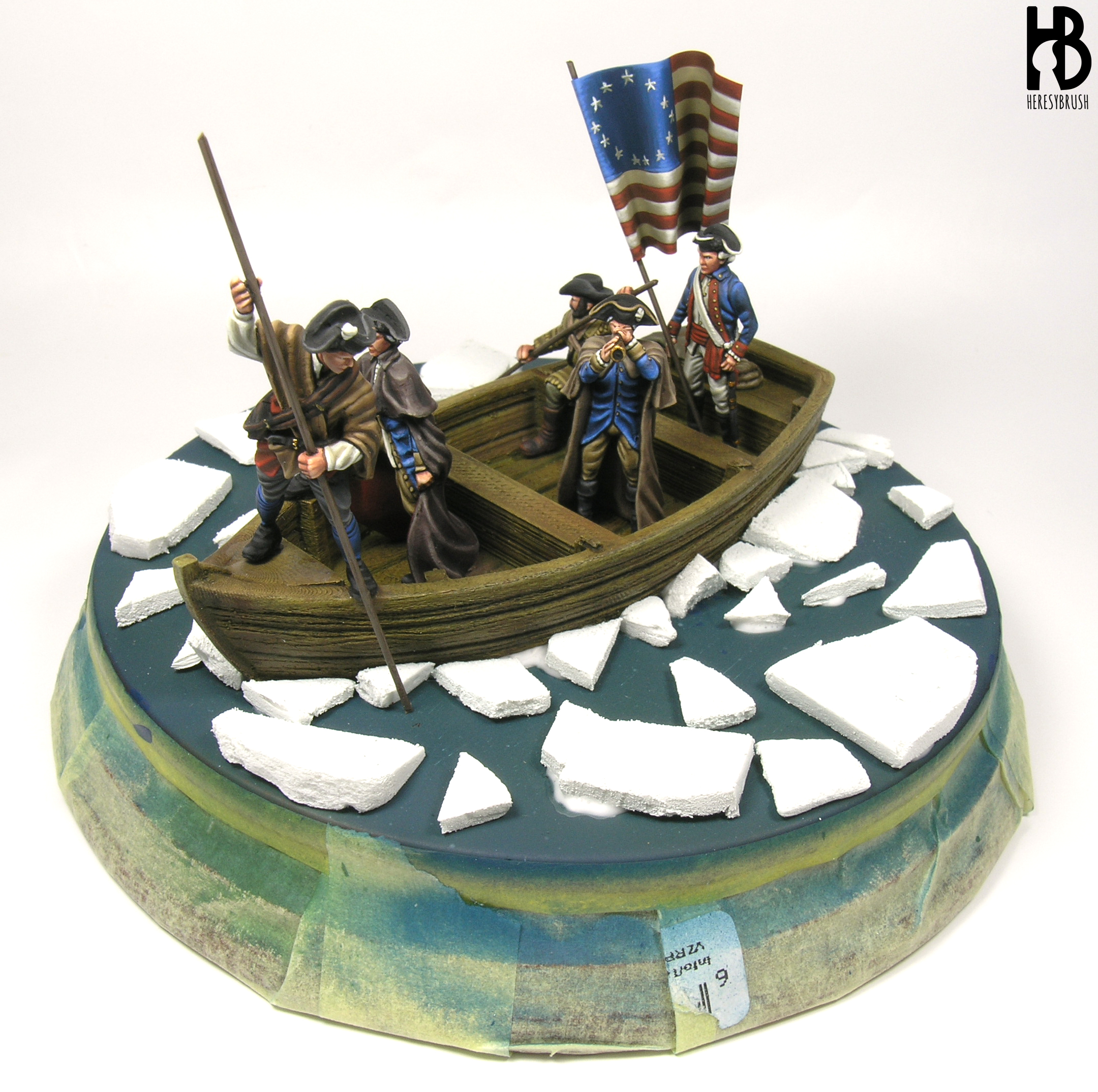 To create the water effect I directly apply on top of the painted base a few layers of the acrylic resin Still Water (Vallejo). I applied three layers, once the previous one was dry (I let them to dry overnight). For the second layer, I add a little bit of Periscopes blue to the water effect trying to create a deeper effect.
To create the water effect I directly apply on top of the painted base a few layers of the acrylic resin Still Water (Vallejo). I applied three layers, once the previous one was dry (I let them to dry overnight). For the second layer, I add a little bit of Periscopes blue to the water effect trying to create a deeper effect.
And this is the final result:

